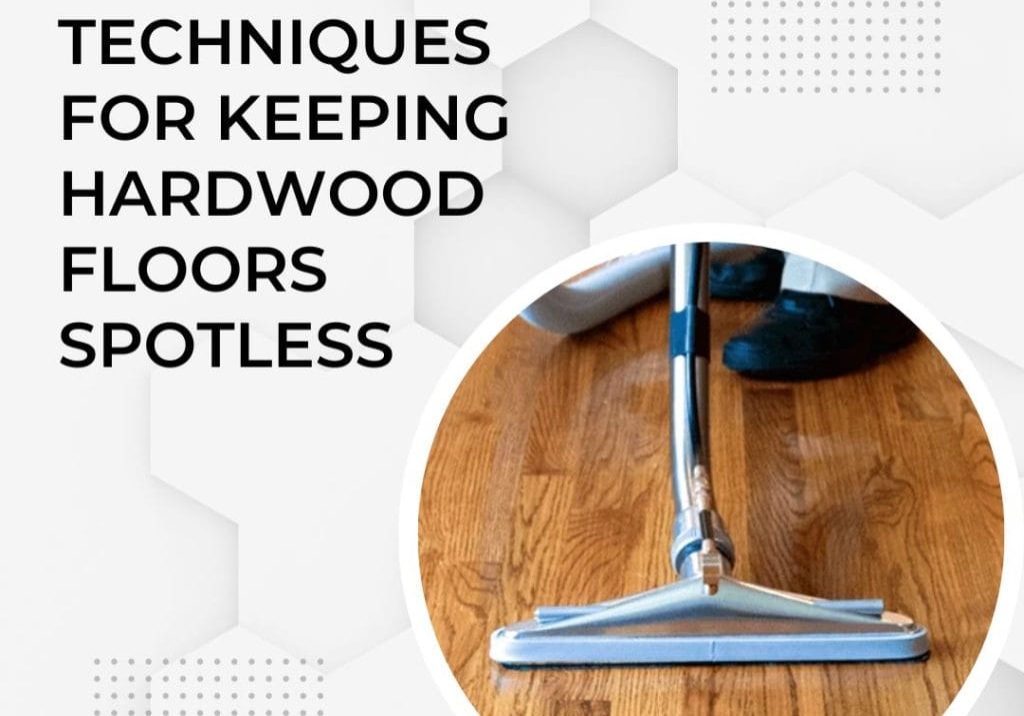Polyurethane, a versatile and durable finish, is essential in wood maintenance and aesthetics. The silent hero enhances the natural beauty of the wood while protecting it from everyday wear and tear. But does polyurethane seal the wood? It forms a robust barrier that seals the wood, safeguarding it from moisture and scratches. Its application can breathe new life into wooden pieces, whether in your retail store or cozy cafe, ensuring they look their best and last longer. This guide will show you how to apply polyurethane to wood, an effort well worth for your business.
Understanding Different Types of Polyurethane
Before diving into the process of polyurethane application, it’s crucial to understand the different types of polyurethane available in the market. Each type has unique properties and implications for your wood pieces, influencing the final look and durability. Let’s explore these variants to help you make an informed choice for your business needs.
Oil-Based vs. Water-Based Polyurethane
Oil-based polyurethane is revered for its rich, glossy finish and remarkable durability. It’s ideal for high-traffic areas, offering excellent scratches and wear resistance. However, its application can be more complex and has a longer drying time than its water-based counterpart.
On the other hand, water-based polyurethane is appreciated for its quick drying time and low odor, making it a user-friendly option. Its finish is more subtle, preserving the natural color of the wood. It’s also eco-friendly and easier to clean up. But it might require more coats for the same level of protection.
Both types have their place, depending on your specific needs and preferences.
Pros and Cons of Business Applications
Let’s delve into the advantages and disadvantages of applying polyurethane in a business setting to better understand its impact on your bottom line.
Pros
- Durability: Polyurethane provides a robust seal that can withstand significant wear and tear, making it ideal for businesses with high footfall or heavy furniture usage.
- Aesthetics: The glossy finish enhances the natural beauty of the wood, adding a touch of elegance to your business premises.
- Preservation: By sealing the wood, polyurethane helps preserve and extend your wooden items’ life, offering cost savings in the long run.
Cons
- Application Complexity: The application process for polyurethane, especially oil-based, can be complex and time-consuming.
- Drying Time: Oil-based polyurethane has a longer drying time, which could disrupt business operations.
- Maintenance: While polyurethane seals and protects wood, it may require reapplication over time to maintain its protective qualities.
Preparation of Wood for Polyurethane Application
Before the actual application of polyurethane, it’s essential to properly prepare the wood surfaces. This involves a few crucial steps that ensure the wood is clean, smooth, and ready to absorb the polyurethane for an optimal finish. Let’s walk through this preparatory process.
Surface Preparation and Sanding Techniques
Preparing your wood surfaces involves careful cleaning and meticulous sanding, the essential first steps in ensuring your polyurethane application is successful and long-lasting.
Cleaning the Wood: Start by cleaning the wood surface thoroughly. Remove dust, dirt, or any existing finish using a damp cloth or a soft brush. This ensures that the polyurethane application is smooth and even.
Sanding: Next, sand the wood. Sanding helps to smooth out any rough spots and makes it easier for the polyurethane to adhere to the wood. Use fine-grit sandpaper and always sand along the grain of the wood. After sanding, clean the surface with a dry cloth to remove any residual dust.
Pre-treatment: Some woods may benefit from a pre-treatment with a wood conditioner. This step ensures a more uniform application of polyurethane, especially on woods with uneven grain patterns.
Remember, proper preparation is the key to achieving a professional and long-lasting finish when applying polyurethane to wood.
Cleaning and Dust Removal For a Flawless Finish
Dust and debris can create a rough, unappealing finish when they mix with polyurethane. Therefore, post-sanding cleanup is critical for a smooth and flawless finish. Use a vacuum or an air compressor to remove most of the sawdust from the surface. Then, wipe the surface with a damp cloth to pick up any remaining dust. Before proceeding to the next step, ensure your workspace is free from dust that could settle on your wet finish. These steps will enhance your polyurethane application, helping you achieve a perfectly sealed, beautiful wooden surface for your business needs.
Choosing the Right Tools for Application
Choosing the right tools for applying polyurethane is as important as the application process. The instruments you select can significantly influence the ease of application and finish quality, impacting your wood pieces’ overall look and durability. Let’s delve into the essentials you’ll need on your polyurethane application journey.
Brushes, Rags, and Aerosol Sprays
-
Brushes
When it comes to applying polyurethane, brushes are a popular choice. They allow you to precisely control the coat thickness, ensuring an even application. Choose a high-quality, natural-bristle brush for oil-based polyurethane and a synthetic-bristle brush for water-based polyurethane.
-
Rags
Rags can be an excellent choice for applying oil-based polyurethane. They enable you to rub the finish into the wood, resulting in a smoother, streak-free surface. However, use lint-free rags to avoid debris in your finish.
-
Aerosol Sprays
Aerosol sprays offer a quick and convenient way to apply polyurethane, especially on intricate or hard-to-reach surfaces. They produce a fine mist that covers the surface evenly but may require multiple coats for adequate protection.
Choosing Proper Tools for Various Wood Types
The tool you choose largely depends on the nature of the wooden surface you’re working with. Brushes or rags are ideal for large, flat surfaces such as tables or shelves as they allow even distribution and control over the polyurethane application.
In contrast, aerosol sprays can be a lifesaver for intricate surfaces with nooks and crannies, like carved furniture or moldings. They offer a simple method to reach difficult areas, providing a uniform coat for comprehensive protection.
Remember, while choosing your tool, consider both the type of polyurethane (oil or water-based) and the characteristics of your wooden surface for a foolproof application.
Step-by-Step Guide to Applying Polyurethane
Entering the practical stage of our comprehensive guide, let’s delve into how to apply polyurethane to wood. This detailed walkthrough will equip you with the knowledge and confidence to seal your wooden surfaces effectively, enhancing their aesthetic appeal and longevity.
Detailed Steps for Application
This section will elucidate the detailed steps of polyurethane application, ensuring your wooden surfaces are well-sealed and protected.
Step 1: Preparing the Wood
Start by preparing the wood using the abovementioned methods (cleaning, sanding, pre-treatment). Ensure the surface is clean, smooth, and dust-free before starting the polyurethane application process.
Step 2: Applying the First Coat
Apply a thin coat of polyurethane using your chosen method (brush, rag, or aerosol spray). Apply the polyurethane along the wood grain for a smooth finish. Let it dry as per the manufacturer’s instructions.
Step 3: Sanding After First Coat
Once the first coat is dry, lightly sand the surface with fine-grit sandpaper. This step helps the following coat to adhere better.
Step 4: Applying Subsequent Coats
Apply additional coats, allowing each one to dry thoroughly and sanding lightly between coats.
Step 5: Final Drying
Allow the final coat to dry fully. Avoid touching the surface until it is completely dry. This process seals the wood effectively, providing a lustrous, durable finish.
Tips for Maintaining a Dust-Free Environment During Application
Maintaining a dust-free environment while applying polyurethane is crucial to achieving a smooth and flawless finish. Here are some tips to help you create a clean workspace:
- Clean Your Workspace – Before starting your application process, ensure your workspace is thoroughly cleaned and free from dust or debris.
- Use Dust Sheets or Tarps – Cover surrounding areas and furniture with dust sheets or tarps to prevent dust accumulation.
- Use a Vacuum or Air Compressor – Regularly vacuum or use an air compressor to remove dust from your workspace.
- Avoid Windy Conditions – Wind can blow dust into your workspace. Try to apply polyurethane in calm and still conditions.
Navigating Between Coats: Sanding and Recoating
Navigating between coats involves careful sanding and recoating to ensure an even finish and effective wood sealing. Let’s explore this process’s essentials and how to optimally apply polyurethane to wood.
Techniques for Sanding Between Coats
Sanding between coats is integral to the polyurethane application process, enhancing the final product’s smoothness and luster. Let’s delve into the technique and benefits of this crucial step.
Light Sanding
After each coat of polyurethane dries, it’s necessary to lightly sand the wooden surface. This technique helps to remove minor imperfections and creates a rougher surface for the next coat to adhere to effectively. Use fine-grit sandpaper (220-grit or higher) to ensure you’re not removing too much of the polyurethane layer.
Cleaning After Sanding
Once you’ve lightly sanded the surface, the next step is to clean it meticulously. This involves removing any residual dust that may have been produced during sanding. For this task, you can use a vacuum or air compressor, then wipe the surface with a damp cloth. This process ensures a clean and dust-free surface for the next layer of polyurethane.
Remember, working gently and clean thoroughly is the key to successful sanding between coats. This process significantly contributes to the question, “Does polyurethane seal wood effectively?” The answer is a resounding yes if done correctly.
Timing and Methods for Recoating
Understanding the timing and methods for recoating is crucial in the polyurethane application process to ensure a flawless and long-lasting finish.
Timing for Recoating
After applying a coat of polyurethane, it’s crucial to allow sufficient drying time before proceeding with the next coat. The drying time can vary depending on the type of polyurethane (oil or water-based) and environmental conditions. Generally, a drying period of 24 hours is recommended.
Methods for Recoating
The method for recoating is similar to applying the first coat. Use your chosen application tool (brush, rag, or aerosol spray) to evenly spread the polyurethane along the wood grain. A dust-free environment and light sanding between coats ensure a smooth, effective seal.
Troubleshooting Common Issues
As we strive for perfection in the application of polyurethane to wood, there may be times when we encounter issues or setbacks. This section will guide you through troubleshooting common problems that might arise, ensuring that “Does polyurethane seal wood effectively?” always remains answered affirmatively.
Addressing Drips, Bubbles, and Imperfections
Let’s delve into common hitches like drips, bubbles, and imperfections you may encounter during polyurethane application and provide effective solutions to tackle them.
Addressing Drips: Drips can occur if polyurethane has been applied too thickly. Always spread thin, even coats, and remove any excess with a brush or rag to address this. If drips occur, sand the area lightly once dry, then reapply the polyurethane.
Handling Bubbles: Bubbles may form if the polyurethane is overworked during application. To prevent this, apply with smooth, even strokes and avoid excessive brushing. If bubbles appear, let the coat dry, sand lightly, and use a new coat.
Fixing Imperfections: Imperfections can be signs of dust or debris on the surface. Ensure the surface is clean before applying and maintain a dust-free environment. If imperfections are noticed, sand the area gently and reapply the polyurethane.
Razor Blade and Sanding Usage
Razor Blade Usage: A razor blade is handy for drying drips or runs in the polyurethane finish. By gently scraping along the direction of the drop or run, you can level the surface without causing undue harm to the surrounding finish. However, exercise extreme caution to avoid gouging the wood.
Additional Sanding: Additional sanding may be required when the previous coat of polyurethane doesn’t feel smooth or if imperfections like bubbles or dust particles have hardened into the finish. In such cases, using fine-grit sandpaper to gently smooth the entire surface before proceeding with the next coat can be highly beneficial.
Final Touches: Achieving a Professional Finish
This guide’s ultimate goal is to achieve a professional finish when applying polyurethane to wood. This section will delve into the final touches that can transform your polyurethane application from a mere sealing task to a masterpiece of woodworking artistry.
Final Coat and Polishing: Achieving Excellence
-
Final Coat Application
The final coat is the culmination of your hard work sealing your wood with polyurethane. Use a high-quality, fine-bristled brush or a foam applicator for this task. Apply the polyurethane following the wood grain direction in thin, even strokes, ensuring a smooth and glossy finish.
-
Polishing for a High-Quality Finish
After the final coat has fully dried, it’s time to polish for a professional look. Use fine-grit sandpaper or steel wool to lightly buff the surface. Finally, apply a high-quality furniture wax with a soft cloth and buff again for a high-gloss, durable finish. This technique answers “How to Apply Polyurethane to Wood” in a way that results in a professional finish.
Maintenance Tips for SMB Owners
This section will explore useful maintenance tips and strategies for small to medium business owners.
Regular Cleaning
Regular cleaning goes a long way in maintaining the luster of your polyurethane-sealed wood. Use a mild, non-abrasive cleaner and a soft cloth to keep the surface dust and grime-free.
Avoid Direct Sunlight
Excessive exposure to sunlight can cause discoloration and damage to your wood. Always keep your polyurethane-sealed wood items away from direct sunlight.
Periodic Inspection and Touch-ups
Inspect your wood items periodically for any scratches or wear. Small imperfections can be touched up with a small brush and polyurethane, ensuring the longevity of your wood items.
Conclusion: Protecting Your Investment
In conclusion, understanding how to properly apply polyurethane to wood is a significant investment that enhances your wooden items’ longevity and aesthetic appeal. The process, although seemingly complex, yields substantial long-term benefits. The time and effort invested in meticulously applying this sealant, troubleshooting any issues, and maintaining the finish can safeguard your valuable business assets, ensuring they stand the test of time. So, always remember, the answer to “Does polyurethane seal the wood?” is a resounding yes, and the benefits are well worth the effort. Let’s invest today in polyurethane application for an enduring and appealing tomorrow!










